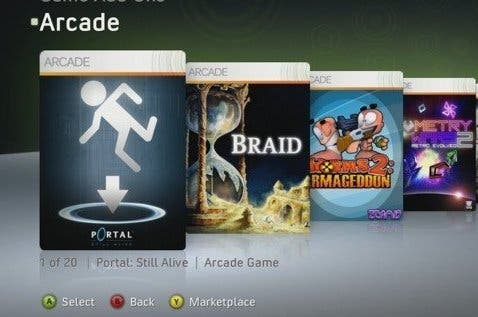Xbox 360 at 10: The brilliance of the 360's dashboard
Blades of glory.
You could point to the console's library of games or Microsoft's groundbreaking technological spine of Xbox Live. You could even point to Xbox 360's Kinect (though it probably won't pick you up for a few seconds). In my mind, however, there's one thing every single Xbox 360 user could not fail to forget.
Swish. Swosh. Swish swosh. The sound of those Xbox 360 blades.
You know the ones - those little panels you cycled through back in the old Xbox 360 dashboard, before everything got flat and Metro-y.
Xbox 360 has had three major dashboard designs during its long decade of service. Looking back, its original interface feels more original Xbox - clunky and largely text-driven, its design rather unsubtly constricted by the curves of the console itself.
And yet - it was smooth and relatively fast. It offered easy access within a few shoulder button presses to an impressive array of online-enabled features - your profile, your Achievements, your friends list, your games library. And it miniaturised all of this into the Guide, a tiny version of the dashboard that could be accessed even while playing games.
Then, three years later, Microsoft released a complete transformation. The update, branded as the New Xbox Experience, added a graphical overhaul. Gone were the constrictions of the previous design, replaced with those gorgeous panels and blades that stretched backwards into oblivion.
Coming to the Xbox 360 a few years after launch, this was the design I was greeted with. I remember clicking through the menus on the day I first switched the console on. Shuffling the panels, opening up the Xbox Live Arcade section and seeing a stack of games waiting to be played that stretched off to the horizon.
One of the other major changes was the introduction of Xbox 360's avatars. Designed by Rare, these virtual versions of you and your friends added a new visual layer to your buddy list, and became a digital mannequin for awards won through gameplay or clothes (purchased for real money) via the avatar store. I can't imagine how much money was made the day they released that lightsaber prop.
This was a dashboard that was fun to rifle through and use. Its use of avatars, custom backgrounds and themes cemented it as a console designed around play and a sense of connectedness with your friends - even if you just saw they were online, there was a passive sense of interaction in watching their avatar hanging out on your desktop. Oh, and you could also make avatars burp and roll their eyes.
The New Xbox Experience was updated again in 2010, its blades flattened to allow for Kinect gesture control. But Microsoft had bigger plans, and in November 2011 unleashed the dashboard that is still in use today.
This third generation of the desktop was dubbed as the "Metro" release, referring to the tile-based design name used throughout all Windows 8-family products - then later dropped when it turned out someone else had the Metro name trademarked.
By now, Xbox 360 looked nothing like the simple text-oriented interface it launched with. The console's capabilities had also improved, buffed with the addition of streaming services such as Netflix, BBC iPlayer, and aligned with Sky in the UK.
You could now save games to the cloud, control the system with your voice and set a Beacon to show your friends what you wanted to play next (okay, no one used that last one). But the basics of the system had remained the same - the Guide, your friends list, your profile and Achievements.
I can't think of a games console that changed more dramatically than Xbox 360. Partly, it was able to just benefit from the advances of the era - when streaming TV and media services really hit the mainstream. But credit should also be given to Microsoft for capitalising on all of this.
The ecosystem and sense of loyalty that all this fostered during the Xbox 360 years ought to have stood Microsoft in good stead when it came to getting people to upgrade to their next console - but other things intervened. Nevertheless, Xbox 360 should be remembered for the continual change and growth it was allowed by Microsoft, and the sense of community it created, in those dashboards.



